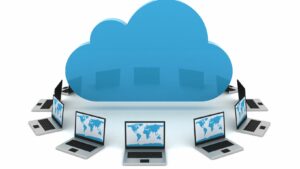Key Takeaways
-
- Definition and Models: Cloud computing delivers computing services over the internet, primarily through three models: IaaS, PaaS, and SaaS, offering flexible and scalable solutions for businesses.
-
- Benefits: Key advantages of cloud computing include cost efficiency, scalability, accessibility, enhanced collaboration, and robust security, all driving operational efficiency and innovation.
-
- Learning Resources: A variety of self-study resources—such as books, online courses, and documentation from major cloud providers—facilitate the learning journey in cloud computing.
-
- Essential Skills: Mastering relevant programming languages (e.g., Python, Java, JavaScript) and tools (e.g., AWS, Docker, CI/CD) is crucial for success in cloud computing careers.
-
- Practical Experience: Engaging in projects and internships in cloud computing helps reinforce theoretical knowledge and provides valuable practical insights into the industry.
-
- Continuous Learning: Staying updated with industry trends (like serverless computing and multi-cloud strategies) and networking through communities is essential for professionals to remain competitive in the dynamic cloud landscape.
In today’s digital landscape, cloud computing is transforming how businesses operate and innovate. With its ability to streamline processes and enhance collaboration, mastering cloud technology has become essential for professionals across various industries. As companies increasingly rely on cloud solutions, the demand for skilled individuals in this field continues to rise.
Learning cloud computing might seem daunting, but it’s more accessible than ever. Numerous resources, including online courses, tutorials, and community forums, provide valuable insights and hands-on experience. By embracing a structured approach to learning, anyone can unlock the potential of cloud technologies and position themselves for success in an evolving job market.
How to Learn Cloud Computing
Cloud computing refers to the delivery of computing services over the internet, enabling on-demand access to various resources. This technology has transformed how organizations operate by providing scalable and flexible solutions.
What Is Cloud Computing?

Cloud computing encompasses several services, including storage, processing power, and software applications. It typically falls into three main models:
-
- Infrastructure as a Service (IaaS): Offers virtualized hardware resources over the internet.
-
- Platform as a Service (PaaS): Provides a platform for developing, managing, and deploying applications without dealing with underlying infrastructure.
-
- Software as a Service (SaaS): Delivers software Applications over the internet, eliminating the need for installations on individual devices.
These models allow users to efficiently access and manage data and applications while reducing the need for physical hardware.
Benefits of Cloud Computing
Cloud computing offers numerous advantages, including:
-
- Cost Efficiency: Reduces costs related to hardware, maintenance, and energy consumption.
-
- Scalability: Adjusts resources based on demand, ensuring optimal performance during peak usage times.
-
- Accessibility: Enables access to services and data from any location with internet connectivity.
-
- Collaboration: Facilitates easier collaboration among team members by allowing simultaneous access to shared files and applications.
-
- Security: Provides advanced security features, including data encryption and identity access management, ensuring that sensitive information remains protected.
These benefits significantly enhance operational efficiency and can empower businesses to innovate more rapidly.
Learning Pathways
Learning cloud computing involves structured approaches through various resources. These methods enhance understanding and skill acquisition necessary for navigating the cloud computing landscape.
Self-Study Resources
Self-study resources provide flexibility and a personalized learning experience. Individuals can utilize:

-
- Books: Numerous comprehensive texts cover cloud computing fundamentals and advanced concepts. Recommended titles include “Cloud Computing: Concepts, Technology & Architecture” and “Architecting the Cloud.”
-
- Documentation: Major cloud providers like Amazon Web Services (AWS), Microsoft Azure, and Google Cloud offer extensive documentation that details services, features, and best practices.
-
- YouTube Channels: Several educational channels feature tutorials and explanations about cloud technologies. Channels such as AWS Online Training and The Cloud Academy provide valuable insights and hands-on demonstrations.
-
- Blogs and Articles: Industry experts frequently publish their findings and experiences on their blogs. Websites like Medium and TechCrunch cover current trends and innovations in cloud computing.
Online Courses and Certifications
Online courses and certifications offer structured learning experiences, making them popular among aspiring cloud professionals. Key options include:
-
- Coursera: Offers courses from top universities and organizations. Popular options include the Google Cloud Professional Cloud Architect and the AWS Certified Solutions Architect.
-
- edX: Provides a range of cloud computing courses. Harvard’s Introduction to Cloud Computing is a notable course for foundational knowledge.
-
- Udacity: Features a cloud developer nanodegree, focusing on real-world applications and skills.
-
- Certification Programs: Obtaining certifications such as AWS Certified Developer or Microsoft Certified: Azure Fundamentals enhances credentials and demonstrates expertise to employers.
These pathways equip individuals with the necessary knowledge and qualifications to succeed in cloud computing careers.
Essential Skills for Cloud Computing
Cloud computing demands a foundation of essential skills for professionals aspiring to excel in the field. Focus on specific programming languages, tools, and technologies that enhance operational capabilities.
Programming Languages to Learn
-
- Python: Python’s versatility and simplicity make it a preferred choice for cloud computing. It facilitates cloud automation, data analysis, and scripting tasks.
-
- Java: Java’s ability to build scalable applications positions it as a vital language in cloud environments. Many cloud service providers rely on Java frameworks.
-
- JavaScript: JavaScript enables dynamic web applications and is integral for client-side development in cloud architectures. Mastering frameworks like Node.js enhances server-side capabilities.
-
- Go: Go’s efficiency and concurrency make it suitable for microservices architecture, providing high performance in cloud-native environments.
-
- Ruby: Ruby supports rapid development, particularly with cloud applications. Its framework, Ruby on Rails, simplifies web application deployment on cloud platforms.
Tools and Technologies
-
- Cloud Platforms: Familiarity with major cloud providers, such as Amazon Web Services (AWS), Microsoft Azure, and Google Cloud Platform (GCP), is crucial for deploying and managing resources.
-
- Containerization Tools: Mastering tools like Docker and Kubernetes enables efficient management of applications in containerized environments, promoting scalability and portability.
-
- CI/CD Tools: Understanding Continuous Integration and Continuous Deployment (CI/CD) tools, such as Jenkins and GitLab, streamlines the development and deployment process in cloud environments.
-
- Infrastructure as Code (IaC): Proficiency in IaC tools, including Terraform and AWS CloudFormation, allows automation and management of cloud infrastructure via code, ensuring repeatability and consistency.
-
- Monitoring and Logging Tools: Tools like Prometheus and ELK Stack facilitate monitoring and logging of cloud applications and services, essential for maintaining performance and security.
Practical Experience
Practical experience serves as a vital component in mastering cloud computing. Engaging in real-world projects and internships provides essential hands-on skills that reinforce theoretical knowledge.
Building Projects
Building projects enhances understanding of cloud computing concepts. Individuals can create personal or collaborative projects using platforms like AWS, Azure, or Google Cloud. Example projects include:
-
- Web Applications: Deploying full-stack applications using cloud services.
-
- Data Processing Pipelines: Implementing ETL processes with cloud storage and databases.
-
- Serverless Functions: Developing and deploying serverless applications using AWS Lambda or Azure Functions.
These projects help deepen familiarity with cloud tools and challenges, providing practical insights into cloud service operations.
Internships and Hands-On Opportunities
Internships and hands-on opportunities facilitate direct experience within the cloud computing industry. Many organizations offer internships that focus on cloud-related tasks. Candidates can look for internships that include:
-
- Cloud Engineering: Involvement in deploying and maintaining cloud infrastructure.
-
- DevOps Practices: Participation in CI/CD pipeline setups and automation.
-
- Consultancy Roles: Engaging in cloud strategy and implementation projects.
These opportunities enable individuals to gain industry insights, network with professionals, and enhance resumes with practical experience.
Staying Updated
Staying updated with the latest developments in cloud computing is crucial for professionals in the field. Rapid advancements in technology necessitate continuous learning and adaptation to maintain competitiveness.
Industry Trends and Developments
Monitoring industry trends and developments enhances understanding of cloud computing’s evolving landscape. Key areas to watch include:
-
- Serverless Computing: Leveraging serverless architectures reduces infrastructure management overhead and allows developers to focus on code.
-
- Multi-Cloud Strategies: Many organizations adopt multi-cloud approaches for flexibility and risk management, utilizing services from different providers.
-
- Artificial Intelligence: Integration of AI in cloud services enhances data analytics, security, and overall operational efficiency.
-
- Edge Computing: Processing data closer to the source improves latency and bandwidth, becoming increasingly relevant with IoT growth.
-
- DevOps Practices: Emphasizing collaboration between development and operations teams accelerates software delivery and improves reliability.
Following digital publications, attending webinars, and subscribing to newsletters from reputable sources, such as Gartner or IDC, provides valuable insights into these trends.
Networking and Community Involvement
Engaging with professional networks and communities strengthens knowledge and offers support. Strategies include:
-
- Joining Online Forums: Participating in platforms like Stack Overflow or Reddit allows for exchanging ideas and troubleshooting with peers.
-
- Attending Meetups and Conferences: Networking at industry events fosters valuable connections and provides access to learning opportunities from experts.
-
- Contributing to Open Source Projects: Collaborating on open source initiatives enhances skills while building a portfolio that showcases expertise.
-
- Engaging on Social Media: Following influential cloud computing professionals on LinkedIn or Twitter provides a steady stream of information and resources.
Active involvement in these networks can lead to career opportunities, mentorship, and insights that keep individuals at the forefront of cloud computing advancements.
Mastering cloud computing is essential for anyone looking to thrive in today’s tech-driven world. By leveraging the numerous resources available and following a structured learning path, individuals can build valuable skills that enhance their career opportunities.
Practical experience through projects and internships not only solidifies theoretical knowledge but also prepares professionals for real-world challenges. Staying engaged with industry trends and networking within the community ensures continuous growth and adaptation in this rapidly evolving field.
With dedication and the right approach, anyone can unlock the potential of cloud technologies and contribute to innovation across various sectors.
 Cloud computing encompasses several services, including storage, processing power, and software applications. It typically falls into three main models:
Cloud computing encompasses several services, including storage, processing power, and software applications. It typically falls into three main models:

